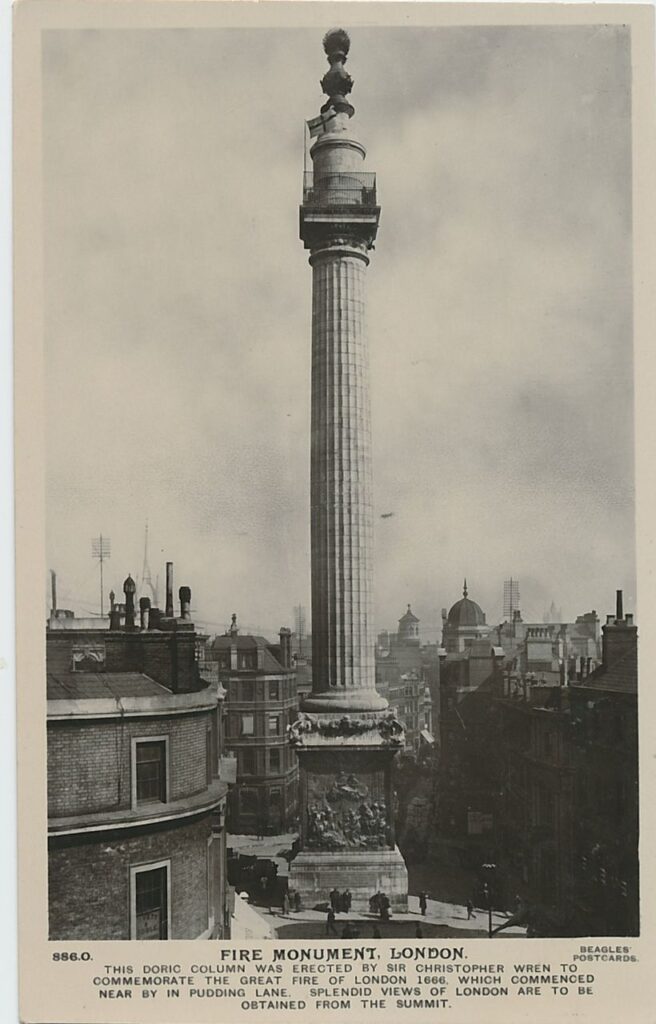
St Magnus the Martyr stands close to the Monument to the Great Fire of London of 1666. The Old Swan by the river, mentioned by Pepys, was a little ‘above bridge’ and in 1715 became the starting point for the Doggett’s Coat and Badge Race, the oldest rowing race in the world. As the current of the river through the narrow starlings of old London Bridge was swift and dangerous those travelling by boat would normally disembark and walk to the other side of the bridge. Fortunately the story had a happy ending for young Michael and Betty Michell as on 24 October 1666 Pepys recorded:
Up, and down to the Old Swan, and there find little Michell come to his new shop that he hath built there in the room of his house that was burned. I hope he will do good here. I drank and bade him joy, for I love him and his wife well, him for his care, and her for her person.
On 6 January 1667 Pepys records:
After dinner young Michell and I, it being an excellent frosty day to walk, did walk out, he showing me the baker’s house in Pudding Lane, where the late great fire begun; and thence all along Thames Street, where I did view several places.
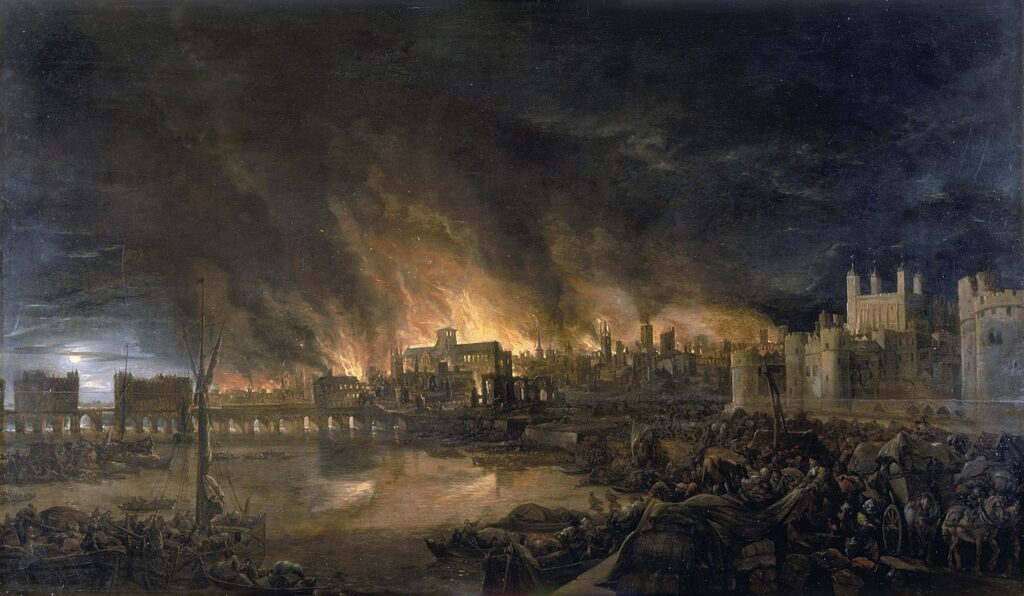
Following its destruction in the Great Fire, St Magnus was completely rebuilt between 1671 and 1687 by Christopher Wren (1632-1723) at a cost of £9,579 19s 10d, the body of the church being substantially complete by 1676.
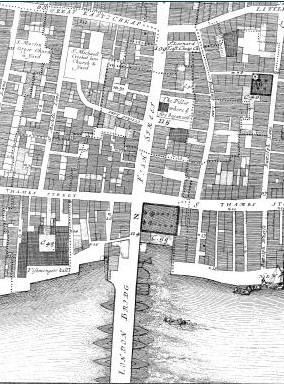
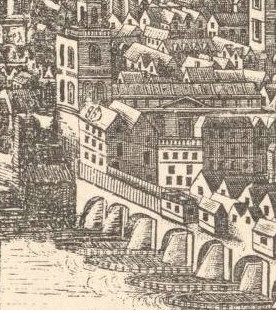
Saint Magnus is one of the few City churches for which drawings of the church exist in Wren’s own hand. The United Parishes made Wren’s close attention in rebuilding the church worth his time, providing the King’s Surveyor with a hogshead of claret to celebrate the fine work done on their church. The church is considered to be one of Wren’s finest and is renowned for its wealth of richly-carved woodwork, beautiful wrought iron work and other fittings. It is Grade I listed. Whilst retained much of its original fabric, St Magnus has witnessed much change over the centuries, including a major transformation from 1924 onwards by the church artist and designer Martin Travers (1886-1948) for the Anglo-Papalist Rector, the Revd Henry Joy Fynes-Clinton (1875-1959).
A report in 1920 from a committee chaired by Lord Phillimore proposed the demolition of nineteen City churches, including St Magnus, but a general outcry from members of the public and parishioners alike prevented the execution of this plan. A further attempt to implement the recommendations of the Phillimore Report in 1926 was resisted by the Earl of Crawford in a debate in the House of Lords on 15 July 1926 who quoted “to your Lordships the list of these condemned churches. It will not take a moment. Even their fine resounding names are worthy of quotation…. St. Magnus the Martyr — many of your Lordships must know that wonderful church by the water’s edge down below London Bridge”.
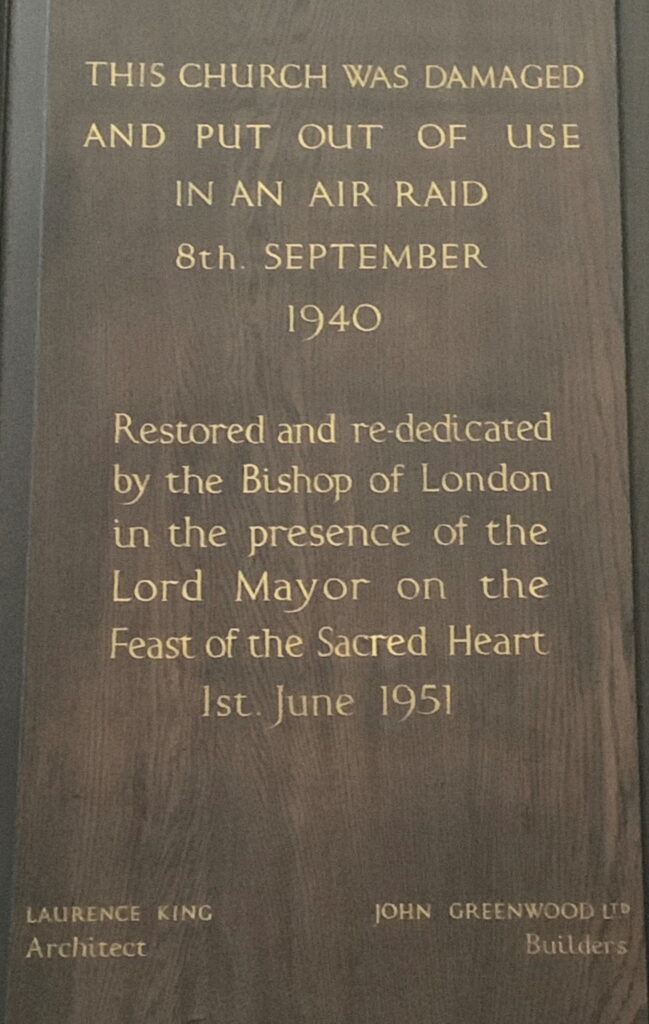
Although the church avoided a direct hit in World War II and many of its fittings were removed for safe-keeping, the church was put out of use on the first day of the Blitz in September 1940. All the windows were blown out and damage was done to the roof and plasterwork on the north side of the church.

On 8 March 1941 the verger, Albert George Ridley, a Constable in the Police War Reserve, was killed in an air raid at Cloak Lane Police Station. After the end of the War the church was repaired, the old fittings restored to their former positions and some new furnishings provided. As recorded on the paneling at the west end of the north aisle, The Bishop of London re-opened and re-dedicated it in the presence of the Lord Mayor on the Feast of the Sacred Heart, 1 June 1951.
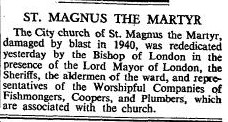
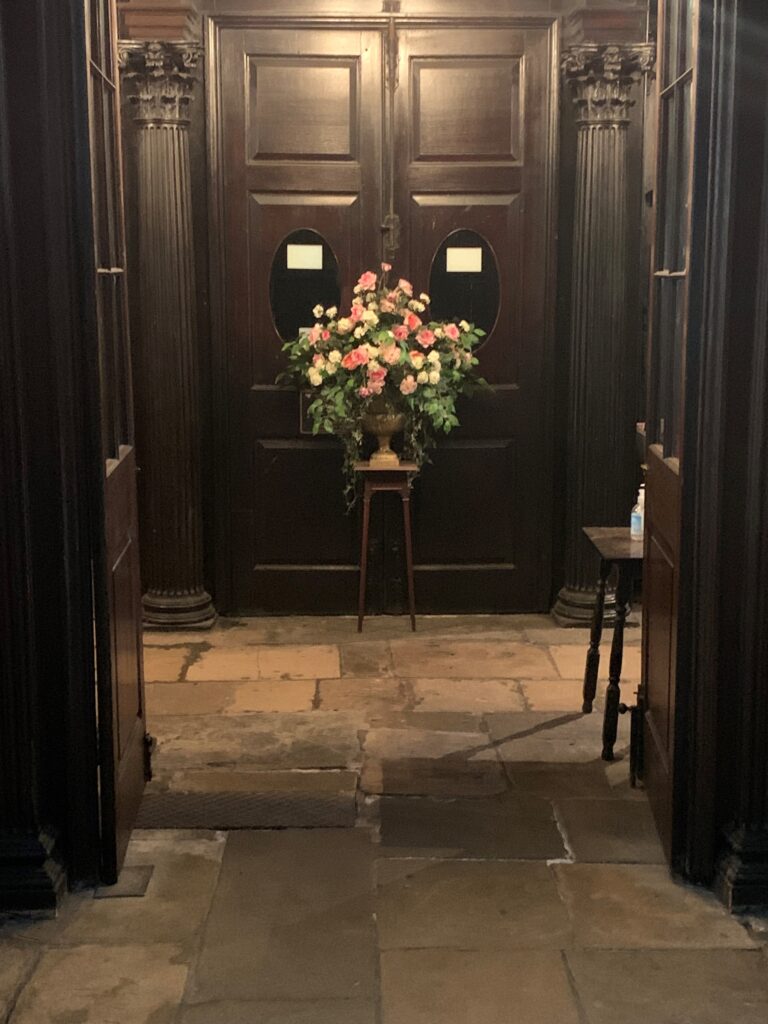
The enclosed narthex or vestibule at the west end of the church has a central double door from the entrance lobby, flanked by Corinthian columns supporting an entablature, and two single side doors. The leaves of the central door each have three raised panels with elliptical glazing to the middle panel. The side doors are of six panels surrounded by simple architraves surmounted by a single rectangular panel.
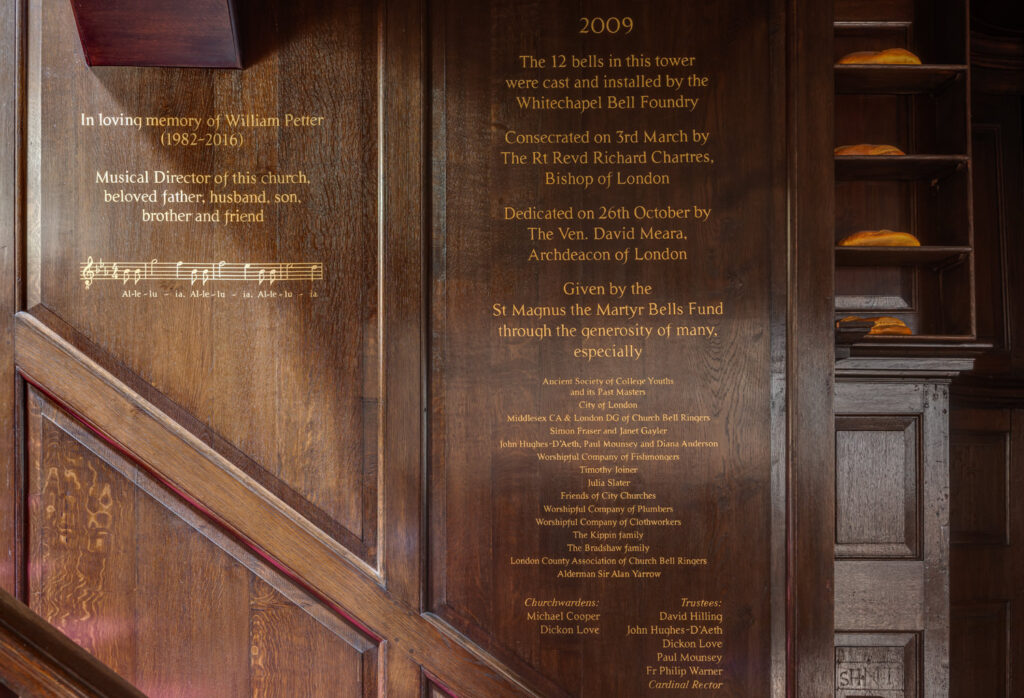
The narthex was part of the nave until the church was shortened in the 1760s. Wren’s screen, incorporating Corinthian pilasters and shelves to keep bread for distribution to the poor after Sunday morning service, can be seen in its original position against the west wall. A modern inscription records the installation of the new ring of 12 bells in 2009 and another provides a memorial for William Petter, director of the choir, who died in 2016.
Two finely carved staircases lead to the organ gallery above, which is partly supported by two wrought iron piers with pierced ornamental sides and Corinthian capitals. A fire in the south west corner of the church during the early hours of 4 November 1995 was entinguished by the London Fire Brigade before it could spread but repairs were required to the panelling on the west wall and to the southern staircase.
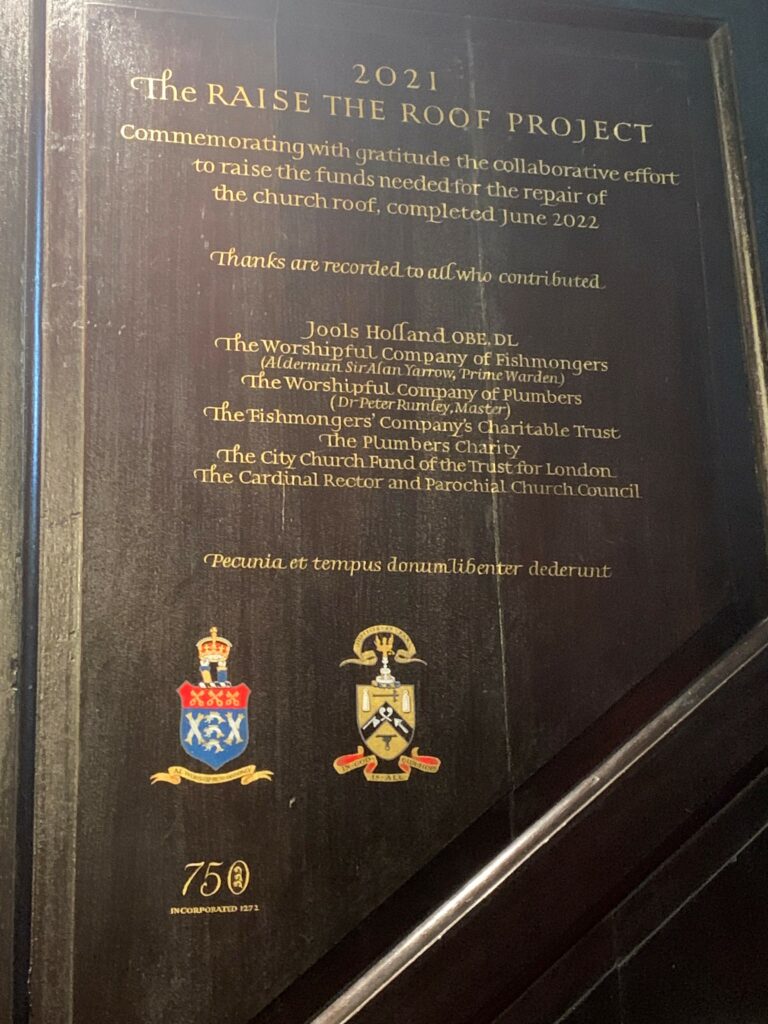
The present screen between the narthex and the nave was made from material brought from other churches when the church was shortened. The central doorway to the nave is flanked by Doric pilasters on the west side and fluted Corinthian pilasters on the east side. There is a holy water stoup for use by those entering the church. On either side of the door, viewed from the narthex, the lower part of the screen is panelled in four heights, the uppermost carved, and the upper part is glazed in octagonal, lozenge and triangular-shaped divisions. There are side screens towards the aisles panelled in five heights, the three lower with raised mouldings and panels. The doors to the aisles are flanked by Doric pilasters.
The inscription ‘Qui me tangit vocem meam audit’ on the wall-mounted sacristry bell means ‘Whoever touches me will hear my voice’.
